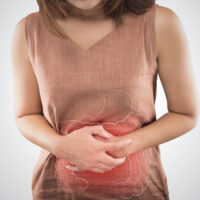Types of home loans and tips for getting one
A home loan is primarily a sum of money, which an individual borrows from a lender such as a non-banking financial institute or a bank at a pre-decided rate of interest. The home is regarded as collateral for the lender to grant a home loan. In case of such a loan, the lender has a legal right to recover the outstanding amount of loan via the sale of the collateral property if the borrower fails to repay the applicable dues in the decided tenure.

Types of home loans
- Fixed-rate loan
In fixed-rate home loans, a pre-decided rate of interest is levied on the borrower. Consequently, a fixed amount through the life of the loan (principal amount plus the interest amount) has to be paid. Usually, the term of such a home loan is either 15 years or 30 years. A jumbo loan is a type of fixed-rate loan. Moreover, this is the most common type of home loan that borrowers take.
Who should apply for it?
This loan is particularly ideal for homeowners who desire predictability. In this type of home loan, you’ll be eligible to pay an X amount of loan for Y number of years, and that’s it. By the end of the Y years, your conventional loan amount would be paid in full. Under this loan mechanism, you’ll have to pay an initial down payment. Consequently, any rise or fall in the rate of interest would not affect your dues. So, at all times, you know what amount you need to pay to your lending agency every month. Having said that, a fixed-rate loan is perfect for people who hope to stay in their current home for a considerable number of years through the loan’s tenure. In case you believe that you will not be staying in this home for a long period, you should consider other types of home loans.
- Adjustable-rate loan
Here, you’ll have to bear interest rates, which are ideally lower than a fixed-rate loan, for a stipulated period, which can be five or ten years, and not for the entire loan tenure. However, after the elapse of this stipulated time, your monthly payments and interest payments will change. The change occurs typically once a year and approximately corresponds to the existing interest rates. If the interest rates rise, your monthly payments will increase. In case the interest rates fall, your monthly payments will decrease.
Who should apply for it?
These home loans are ideal for homebuyers who have a low credit score because with a poor credit score they can rarely avail of a good rate with fixed-rate loans. Though adjustable-rates loans are affordable, ensure that the home loan sanction is within your reach. It is also an ideal loan type for people who intend to move out and sell their home before the interest rates go higher after the stipulated period.
- Federal Housing Administration (FHA) loan
Typically, for availing home loans, you’ll have to pay a down payment, which is equivalent to about 20% of the value of the home. However, if you opt for an FHA loan, you can give a down payment that is as low as 3.5% of the value of the home. It is for this reason that FHAs are managed by the government.
Who should apply for it?
Homeowners that cannot afford to pay down payment should opt for FHA home loans. However, it is important to note that there are a bunch of guidelines associated with this type of loan. Firstly, there isn’t much flexibility. Also, you cannot get a loan of over USD 417,000. They are also fixed-rate home loans, which are given for a term of 15 or 30 years. The homebuyers who opt for FHA loans have to pay mortgage insurance either in the beginning or over the term of the loan. This insurance cost accounts to approximately 1% of the loan amount
- Veterans Affairs (VA) loan
Anyone who has been a part of the military in the US is eligible for VA home loans. It is a convenient alternative to conventional home loans. Those who qualify for this type of loan can get a home with zero mortgage insurance and zero down payment.
Who should apply for it?
These home loans are applicable only for veterans who have associated with the army during wartime consecutively for 90 days, or a minimum of 180 consequent days during peacetime, or six years in the reserves. Since these home loans are backed by the government, there are fixed guidelines and requirements associated with VA. Further, the home for which the loan is taken must adhere to minimum property requirements and should be the primary residence.
- United States Department of Agriculture (USDA) loan
A government-backed loan, USDA loan is ideal for families residing in the rural areas of the country. In this type of home loan, the government will finance the full price for all the homes that are USDA eligible. In simple terms, in USDA home loans, there is no need for a down payment, and the interest rate is also heavily discounted.
Who should apply for it?
If you reside in a rural area and are financially struggling, this loan can help you buy a home. Such home loans are peculiarly designed to ensure that the poor can afford homes. However, in this loan, at no time should your debt load supersede the money earned by you by over 41%.
- Bridge loan
This loan is known as a repeat financing loan or a gap loan. It is an ideal choice of loan for people who are purchasing a home and simultaneously selling off their previous residential property. Under this, the lending company will wrap both the new and the current mortgage amount into one, and after the sale of the previous residence, you repay that amount and then refinance.
Who should apply for it?
It is ideal for people who have a good credit ratio as well as a low DTI, i.e. the debt-to-income ratio. People who do not require finance of over 80% of the combined value of the two homes should seek this alternative. It is a great way of transitioning into a new (possibly a bigger) home without any emotional or financial strain.
Ideas on getting suitable home loans
For home buyers, buying a home can be an exciting experience. However, finding your dream home is only the first step in the ladder. As much as deciding the home is important, you should also be careful in choosing the right home loan scheme. Here are a few tips to help you:
- Save a good amount for your down payment
Now, depending upon the type of loan and the lender that you opt for, you’ll be required to pay a down payment, which could be as low as 2.25%, or as high as 20% of the value of the home. Thus, you need to have this amount. For this, you can prepare a monthly budget, and put away the requisite amount towards the down payment. After you have made your budget, it would be easier for you to put away the money every month for the down payment. You can also have this money auto-deposited from your bank account or a paycheck to a savings account. It will make it easy for you to set aside the money that you are saving towards the down payment every month. In case you fail to accumulate the requisite down payment, you can consider applying for FHA home loans, in which only a small down payment is needed.
- Be aware of your credit score
People who have a good credit score have a better chance of getting a good deal on home loans. Therefore, even before you begin with the process of buying a home, get a copy of your credit report. It will give you an idea as to how your credit profile looks and where you stand. In case you have a low credit rating, start taking the necessary steps towards improving your credit score. A copy of your credit report can be availed every year by either of the three reputed agencies, i.e., TransUnion, Experian, and Equifax for a small fee.
- Have all the documents required for the loan in order
When you apply for home loans, you’ll have to submit a bunch of documents. Once you have all these documents ready, and in place, it will quicken your application process of getting the loan. In general, you’ll be required to submit the following documents:
- Current bank statements
- Tax returns for the last two years
- Present brokerage statements
- Previous two pay stubs
- Most recent W-2 form
- Take help from a mortgage calculator
Before reaching a lending company, it is always good to use a mortgage calculator. These calculators are a great way to understand the amount of loan that you can afford. Most of these online calculators are easy-to-use and give you a fair idea about your monthly mortgage payments.
- Compare home loans from different lenders
Not every loan offer would be the same. So, even if the loan has a similar rate of interest, the amount that you pay in full could differ. It is so because your payment is a composition of the principal amount, the interest amount, and certain additional fees. Now, banks usually have different applicable fees, which in turn, makes one offer pricier or cheaper than the other. Therefore, before you avail of a home loan, you should be aware of the different components, which are involved in the total loan amount. Once you do that, you’ll be able to make a more informed choice.
- Keep a tab on interest rates
The most detrimental aspect of home loans is the interest rate. Do note that the rate of interest fluctuates every other day. Therefore, keeping a tab on this interest rate will certainly help you get the best home loan deals.
- Try to be pre-qualified
For many real estate agents, you need to be pre-qualified for home loans before they associate with you. Well, the process of being pre-qualified is fairly simple. It would require you to submit your financial documents to the bank before applying for the loan. After you are pre-qualified for the loan, you have a better perspective about the price range for the homes that you can afford.
- Be aware of different home loans
It does not matter whether your best friend took a 30-year loan at a fixed interest rate, or your colleague took a loan at the adjustable rate of interest. What matters is finding out, which of the available home loan options is right for you. For some people, the low-interest rate of adjustable-rate home loans is appealing, while for others, the predictability of fixed-interest home loans is desirable. The choice of every home buyer is different and depends on their personal and financial circumstances. Thus, you need to evaluate your situation, and then decide the type of loan that’s apt for you.
- Be quick in your correspondence with the lender
Once you have applied for a home loan, you must be prepared with any additional information that the lender may require. Thus, whenever there’s a request for an additional document or information, you should be prompt in your response. The more time you take towards the submission of these documents, the more delay it would result in the approval of your loan.





